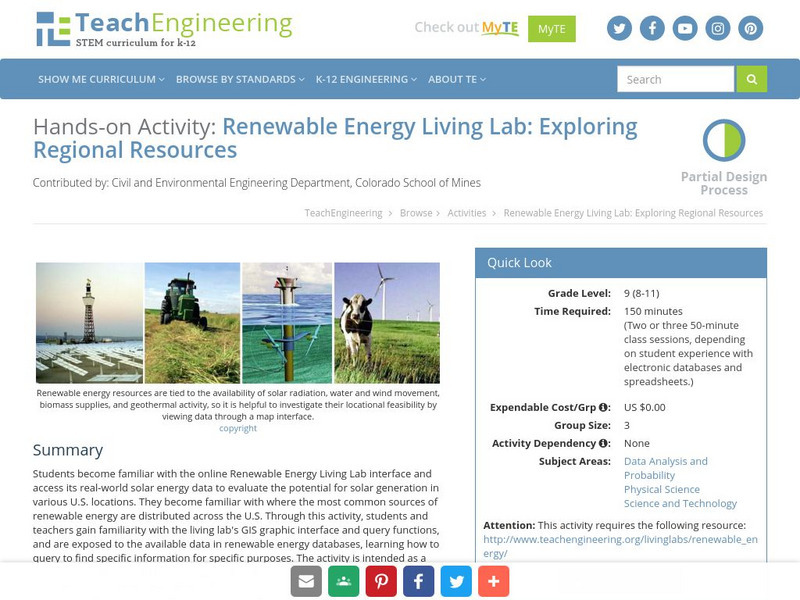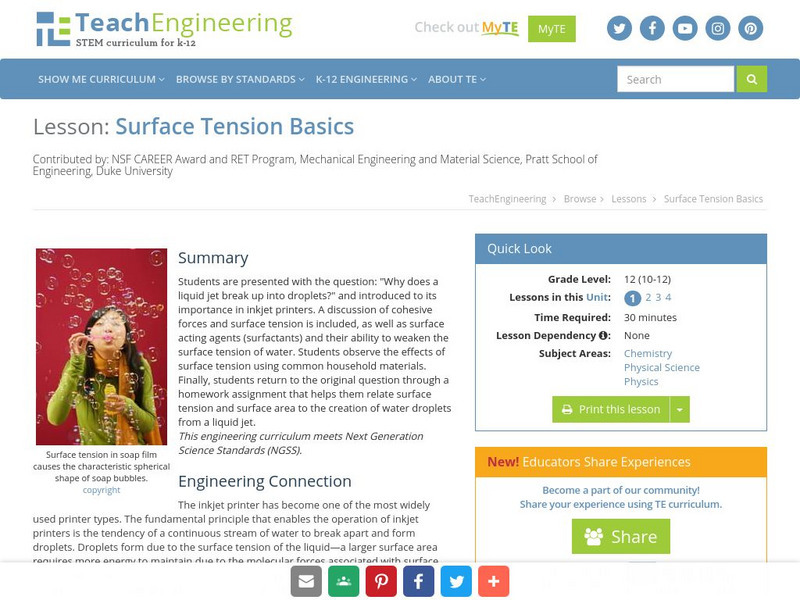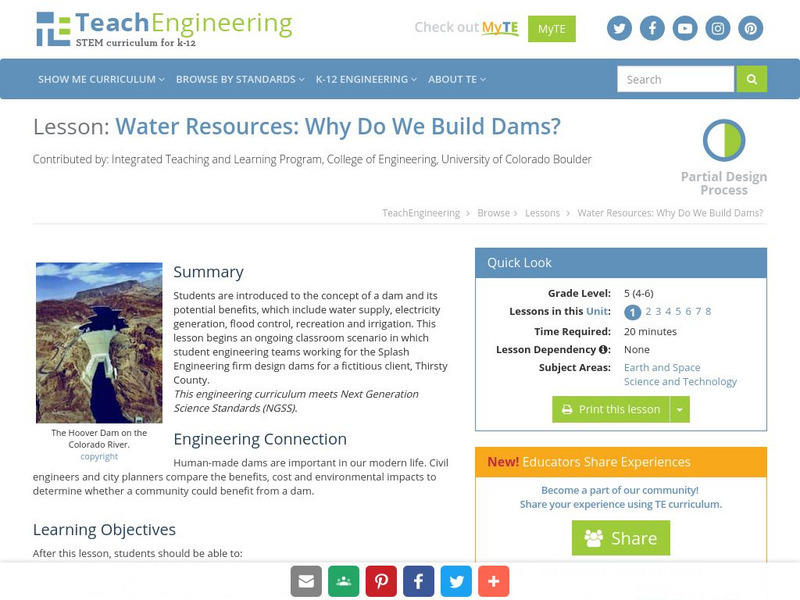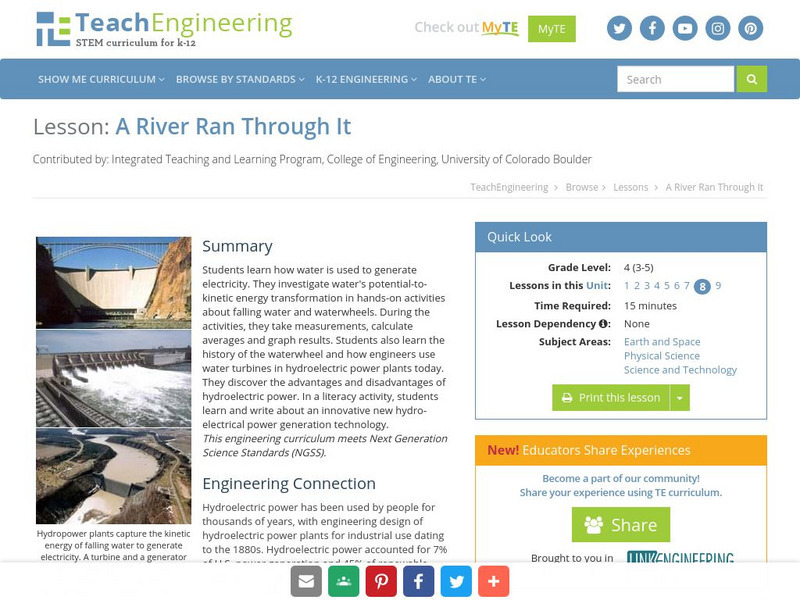Hi, what do you want to do?
TeachEngineering
Teach Engineering: Renewable Energy Living Lab
Students become familiar with the online Renewable Energy Living Lab interface and access its real-world solar energy data to evaluate the potential for solar generation in various U.S. locations. They become familiar with where the most...
Science Buddies
Science Buddies: Leaky Clues to Dam Design: How Reservoir Height Affects Hydroel
It's hard to believe that the same water that you use every day to quench your thirst, cook with, bathe in, swim in, and wash your clothes and dishes, is capable of another trick-it can make electricity. Electricity can be generated...
Concord Consortium
Concord Consortium: Dissolving
Impact on potential energy when a substance dissolves in water. Add water to a substance and observe the impact on potential energy as the substance dissolves. Observe the interactions between molecules as the substance dissolves over...
TeachEngineering
Teach Engineering: Surface Tension Basics
Students are presented with the question: "Why does a liquid jet break up into droplets?" and introduced to its importance in inkjet printers. A discussion of cohesive forces and surface tension is included, as well as surface acting...
Encyclopedia of Earth
Encyclopedia of Earth: Thorium
Information about the element, Thorium, atomic number 90. Covers physical properties, atomic properties, how abundant it is on the Earth, where it is found, and details about health-related regulations. Discusses thorium's potential use...
PBS
Pbs Kids: Design Squad Challenge: Paddle Power [Pdf]
Hands-on challenge to design and build a paddle boat that moves across water using a rubber band as its power source. Provides full list of materials with ideas on how to design, build, test, and redesign it if necessary. Activity...
TeachEngineering
Teach Engineering: Engineering for the Earth
Young students are introduced to the complex systems of the Earth through numerous lessons on its natural resources, processes, weather, climate and landforms. Key earth science topics include rocks, soils and minerals, water and natural...
TeachEngineering
Teach Engineering: Why Do We Build Dams?
Students are introduced to the concept of a dam and its potential benefits, which include water supply, electricity generation, flood control, recreation and irrigation. This lesson begins an ongoing classroom scenario in which student...
TeachEngineering
Teach Engineering: A River Ran Through It
Students learn how water is used to generate electricity. They investigate water's potential-to-kinetic energy transformation in hands-on activities about falling water and waterwheels. During the activities, they take measurements,...










![Pbs Kids: Design Squad Challenge: Paddle Power [Pdf] Activity Pbs Kids: Design Squad Challenge: Paddle Power [Pdf] Activity](https://content.lessonplanet.com/knovation/original/240133-269c480d57012b98a42b2a6067ff8946.jpg?1661182394)


